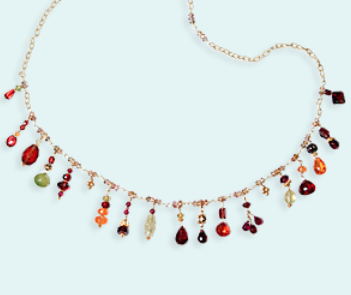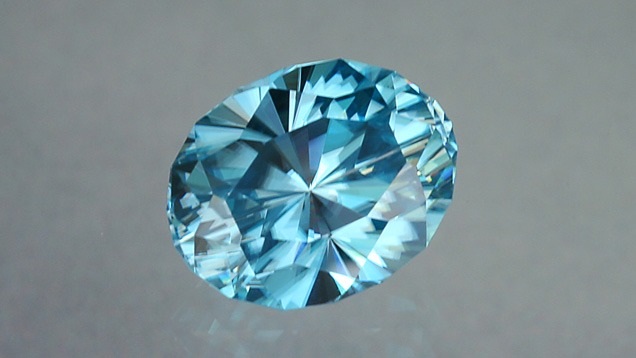
The garnet: an ancient gem, it has been seen adorning the fashionable ever since the pharaohs! Today, the stone is hailed as the birthstone for the month of January; a precious element of warmth and color during the depths of winter, but also an excellent way to celebrate each new year as it arrives!
This stone is both diverse and of great historical significance. It is largely known for its “carbuncle” shade, a term which once referred to just about any red gem, but today means the species of garnet called “Almandine. ” Carbuncle”, from the Latin term for “live coal” denotes its inner warmth, and is also the most common type of gem garnet. This is the shade which we see most often in art of the ancients, from the jewel-encrusted weaponry of the Anglo-Saxons to the garnet-encrusted crown of such illustrious royalty as King Otto of Germany, with a famous garnet called the “Wise One.”
In religion, this stone is known to be a root chakra stone. According to some beliefs, it can be used to gain access to ancient memories, and is a recommended stone to use for past life regression. In Indian mythology, the garnet is called the “Kundalini fire,” or ‘fire of eternal metamorphosis.’ It is also believed to have an energizing effect in the bedroom!

Like sapphires, which are known for being blue (but actually come in an entire rainbow of colors), garnets are much more “multi-faceted” than given credit for! For instance, the red “carbuncle” shade is the most well known, and yet these diverse stones come in colors ranging from greens to oranges, pinkish oranges to deeply saturated purplish reds. These colors can be classified by a whole family system, dictated by each garnet’s chemistry as well as by its color. The garnet group breaks down into species such as pyrope, almandine, spessartine, grossular, and andradite. These species break down into varieties, such as the exquisitely green and sparkling “demantoid” garnet from the Andradite species.
Demantoid garnets were also a favorite of 19th-century jewelry designer Louis Comfort Tiffany, and can often be seen in his American Arts & Crafts-style jewelry. And, as great minds think alike, demantoid garnets are not infrequently seen in Eve’s work! Her fondness also extends to a whole color palette of tsavorite garnets (deep green), mandarin garnets (rich orange,) and a myriad of others just waiting to be set into a project! Come in and see!







 They may be made of hydrated silica, sometimes containing up to 20% water, but opals sure aren’t watered-down! These flashing, fiery October birthstones are highly valued both for their exquisite beauty and their fantastically diverse range appearances. Opals were even considered the penultimate gemstone by ancients such as Pliny the Elder, who lauded them for the belief that they were composed from bits of every other type of precious gem.
They may be made of hydrated silica, sometimes containing up to 20% water, but opals sure aren’t watered-down! These flashing, fiery October birthstones are highly valued both for their exquisite beauty and their fantastically diverse range appearances. Opals were even considered the penultimate gemstone by ancients such as Pliny the Elder, who lauded them for the belief that they were composed from bits of every other type of precious gem. Opals are relatively soft gemstones; about 5.5-6 on the Mohs Hardness Scale, and should be treated with care as much as worn with pride. If you are lucky enough to own this shimmering gem, we recommend keeping it away from harsh cleaning chemicals, and opting instead to clean it with water and a soft-bristled brush. Bezel-set opals, and opals worn as earrings and necklaces are also fantastic ways to keep your precious gem away from hard knocks.
Opals are relatively soft gemstones; about 5.5-6 on the Mohs Hardness Scale, and should be treated with care as much as worn with pride. If you are lucky enough to own this shimmering gem, we recommend keeping it away from harsh cleaning chemicals, and opting instead to clean it with water and a soft-bristled brush. Bezel-set opals, and opals worn as earrings and necklaces are also fantastic ways to keep your precious gem away from hard knocks.
 A sizzling summer stone, the birthstone for August is none other than
A sizzling summer stone, the birthstone for August is none other than 

You must be logged in to post a comment.